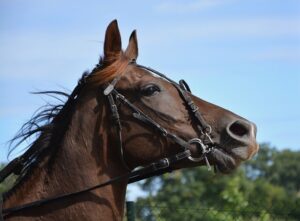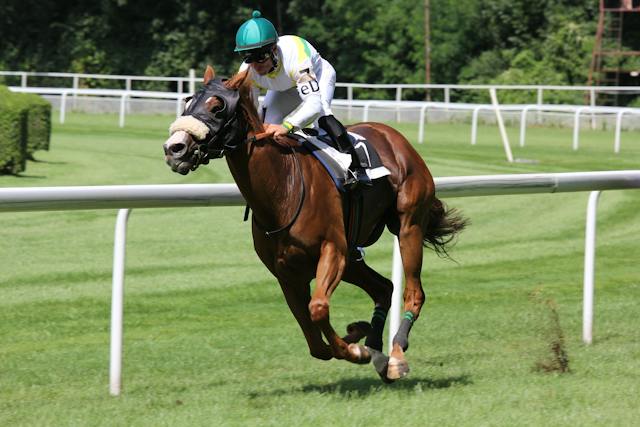 Professional gamblers are often categorised under one heading. In truth, there are sub categories for each and every sport or game. I once remember hearing about a professional gambler who bet on the weather. I’m not sure if he specialised in betting on White Christmas’, Hurricanes or Tornados but he said he made a profit from his expertise. Personally, I can’t imagine he placed many bets.
Professional gamblers are often categorised under one heading. In truth, there are sub categories for each and every sport or game. I once remember hearing about a professional gambler who bet on the weather. I’m not sure if he specialised in betting on White Christmas’, Hurricanes or Tornados but he said he made a profit from his expertise. Personally, I can’t imagine he placed many bets.
To be a good gambler within skill-based sport (you can’t beat fixed odds) you need to be something of a chameleon.
What I mean by chameleon is someone who is in tune with their subject matter. A true reflection of the answer to the question. If the answer is fluorescent tangerine with green spots, guess what, the chameleon changes to match.
In fact, the chameleon can change to any colour.
The Chameleon Professional Gambler is successful because they don’t impose their thoughts, ideas or wishes on a given subject. They don’t bet because they like to bet. They bet because not only is it the right decision but they do so for all the right reasons. They also take advantage of opportunities that tip things in their favour such as a Betfred £50 free bet offer here, or a bet boost there.
A successful gambler watches, listens and learns from the results. The results of any given race are the truth of the matter. And it is your job as a professional gambler to appreciate this fact and understand how this should, and must, direct your efforts, assessment for today and future. The past also helps detail the truth and foretell the future.
The Chameleon changes.
It just turned bright blue.
Indigo.
For example, horse racing. Your opinions should be based on answers to questions. It has nothing to do with your personal preference. You answer to the question (finding winners) is based on previous results. If you try to impose your thoughts without any basis you will lose. It is a blatantly easy approach but at the same time inextricably difficult.
Why?
Because so often gamblers lose track of what is important. They fall into old habits which are destructive, their views without objectivity or sense. Ego gets in the way of seeing the truth which stands solemnly before them.
Each and every winner and loser is trying hard to teach you a valuable lesson, if only you listen.
So often gamblers fail to learn. They are steadfast in their life of hard knocks. But they are the creator of their own destiny and often demise.
Have you ever stopped for a moment and asked: ‘What is the answer to the question?’
The Chameleon Professional Gambler knows they are a reflection of the results.
It is the answer to finding winners.
 In the thrilling spectacle of the Grand National steeplechase, the maximum number of horses permitted to participate stood until recently at 40. This threshold was established in 1993, following a momentous race where a record-breaking 66 runners took their place on the starting line, etching their names into the race’s history books. The decision to impose this limit was motivated by a sincere commitment to prioritise safety, as the Grand National has been marred by unfortunate fatalities throughout its legacy. To further improve safety, in October 2023 the number was again cut to 36. It’s still a significantly sized field though, allowing for those taking advantage of
In the thrilling spectacle of the Grand National steeplechase, the maximum number of horses permitted to participate stood until recently at 40. This threshold was established in 1993, following a momentous race where a record-breaking 66 runners took their place on the starting line, etching their names into the race’s history books. The decision to impose this limit was motivated by a sincere commitment to prioritise safety, as the Grand National has been marred by unfortunate fatalities throughout its legacy. To further improve safety, in October 2023 the number was again cut to 36. It’s still a significantly sized field though, allowing for those taking advantage of  The Elite Hurdle is a Grade 2 hurdle run over 1 mile, 7 furlongs and 50 yards at Wincanton in early November. Currently sponsored by Unibet, the race was inaugurated, on the Old Course at Cheltenham, in 1992 and was originally run over a distance of 2 miles and 87 yards. The inaugural running featured just four runners, but the winner, Morley Street, had won the Champion Hurdle at the Cheltenham Festival the previous year and the second, Granville Again, would do so the following year. No race was staged in 1993, but the Elite Hurdle was resurrected at Wincantion the following year, at which point it was shortened to its current yardage.
The Elite Hurdle is a Grade 2 hurdle run over 1 mile, 7 furlongs and 50 yards at Wincanton in early November. Currently sponsored by Unibet, the race was inaugurated, on the Old Course at Cheltenham, in 1992 and was originally run over a distance of 2 miles and 87 yards. The inaugural running featured just four runners, but the winner, Morley Street, had won the Champion Hurdle at the Cheltenham Festival the previous year and the second, Granville Again, would do so the following year. No race was staged in 1993, but the Elite Hurdle was resurrected at Wincantion the following year, at which point it was shortened to its current yardage.